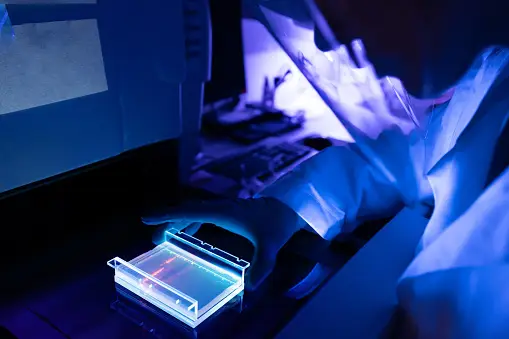Illuminating Authenticity: The Art of UV Light Inspection for Product Authentication

In the battle against counterfeiting, UV light inspection has emerged as a powerful tool for discerning the real from the fake.
Manufacturers integrate UV features into product packaging to enhance security and provide consumers with a reliable method for authentication. In this comprehensive guide, we shed light on the intricacies of UV light inspection, empowering consumers to unveil authenticity with a simple glow.1. Unmasking UV Features: A Primer
Understand the basics of UV features before delving into inspection techniques. UV features are elements embedded in product packaging that react to ultraviolet (UV) light. These features are often invisible or subtle under normal lighting conditions but become apparent when exposed to UV light.2. UV-Active Inks and Materials: Shining Bright
Authentic products often incorporate UV-active inks and materials. When subjected to UV light, these inks and materials emit a visible glow. During inspection, use a UV light source to illuminate the packaging. Genuine UV features will shine bright, revealing hidden patterns, symbols, or text.3. Consistency in Glow: A Reliable Indicator
Examine the consistency of the UV glow across different parts of the packaging. Authentic UV features maintain a uniform and consistent glow. Counterfeit products may struggle to replicate this uniformity, leading to uneven or patchy UV reactions. A reliable UV glow is a strong indicator of authenticity.4. Hidden Symbols and Markings: Cracking the Code
Authentic UV features often conceal hidden symbols or markings. Carefully inspect the packaging under UV light to reveal these concealed elements. Counterfeit products may lack the precision needed to reproduce intricate symbols or markings accurately. The presence of hidden details adds an extra layer of security.5. UV-Activated Security Labels: An Extra Layer
Some products incorporate UV-activated security labels. These labels may change color or reveal additional information when exposed to UV light. Authentic labels will exhibit the intended changes, providing a clear sign of genuine packaging. Counterfeit labels may not display the expected UV-activated effects.6. Holographic UV Elements: Dynamic Displays
Holographic UV elements add a dynamic dimension to product authentication. Genuine holographic features may include UV-active components that produce shifting patterns or colors under UV light. Counterfeit holographic features may lack the complexity needed to replicate these dynamic displays.7. UV Penetration: Assessing Layers
Evaluate how UV light penetrates different layers of the packaging. Genuine UV features often penetrate the outer layers, providing a consistent glow throughout. Counterfeit products may struggle to achieve this penetration, resulting in a superficial or weak UV reaction. Assess the depth of the UV glow for authenticity.8. Manufacturer's Endorsement: Official Confirmation
Manufacturers may endorse specific UV inspection methods for their products. Refer to official resources, such as the manufacturer's website or product documentation, for guidelines on UV light inspection. This ensures consumers have accurate information tailored to the product's design.9. Portable UV Lights: On-the-Go Authentication
Invest in portable UV lights for on-the-go authentication. These compact devices allow consumers to inspect products anywhere, ensuring they can verify authenticity at the point of purchase. Portable UV lights are convenient tools for safeguarding against counterfeit products.10. Educating the Consumer: Empowering Authentic Choices
Beyond individual inspections, educating consumers on UV features fosters a collective effort against counterfeiting. Share information on social media, through product packaging, or on educational platforms to empower consumers with the knowledge needed to make authentic choices.In conclusion, UV light inspection involves unmasking UV features, identifying UV-active inks and materials,
ensuring consistency in glow, revealing hidden symbols and markings, exploring UV-activated security labels, appreciating holographic UV elements, assessing UV penetration, seeking manufacturer's endorsement, embracing portable UV lights, and educating the consumer. By mastering these aspects, consumers can confidently navigate the world of UV light inspection, illuminating authenticity in every glow.#UVLightInspection #ProductAuthentication #ConsumerAwareness #1knairaInsights
Category Identity ManagementNews Source
Date Posted 1 year ago